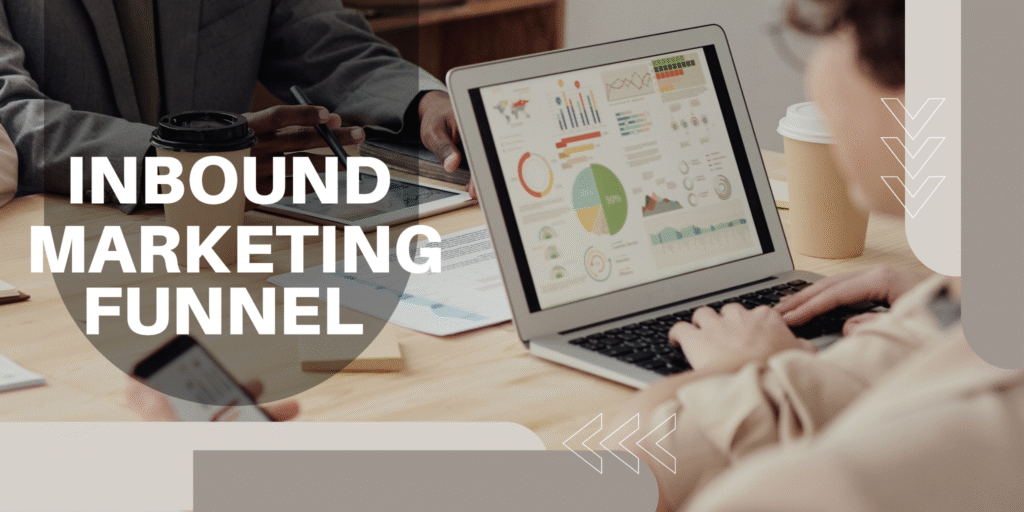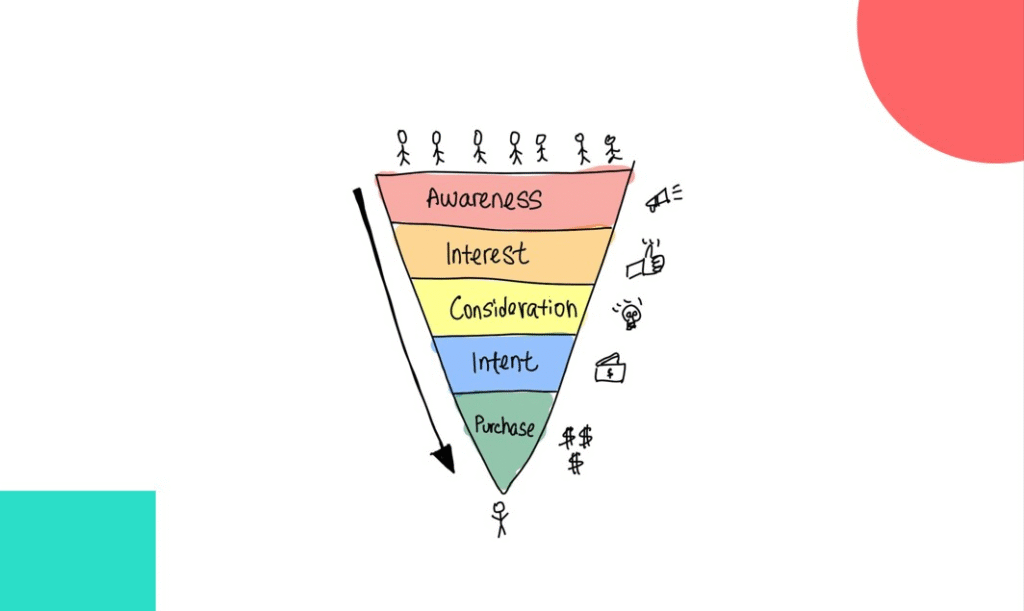In this era of digital-first business, today’s consumers are better-informed, smarter, and less receptive to cold-hard sell calling or intrusive advertising. Instead, consumers seek brands that offer value first, before expecting a sale. That is where the inbound marketing funnel comes in as the star of the show, a process that attracts prospects in, gets to know them through valuable content, and turns them into high-value customers. Unlike traditional sales funnels that chase leads, the inbound funnel pulls customers in organically through trust, education, and personalization.

In this article, we’ll dive deep into the inbound marketing funnel, its stages, importance, benefits for lead generation, and a step-by-step guide on how to build one. By the end, you’ll know exactly how to design a funnel that works 24/7 to capture, qualify, and convert leads for your business.
- What is an Inbound Marketing Funnel?
- The Key Steps of the Inbound Marketing Funnel
- Why Inbound Marketing Funnels Are Important for Lead Generation
- How to Create an Inbound Marketing Funnel (Step-by-Step)
- Best Practices for Inbound Funnel Success
- Common Inbound Marketing Funnel Mistakes to Avoid
- Final Thoughts
- FAQs
What is an Inbound Marketing Funnel?

An inbound marketing funnel is a process of leading prospective buyers through stages of awareness towards eventual conversion and loyalty. It functions by offering the proper content and experiences at every step of the buying process. Rather than interrupting prospects with product messages, an inbound funnel draws them in with helpful content, solution materials, and tailored experiences.
Inbound Funnel vs. Traditional Sales Funnel
- Traditional Sales Funnel: Cold calling, advertising, and hard sell. Prone to chasing individuals who are not necessarily qualified.
- Inbound Marketing Funnel: Nurtures individuals naturally by the means of blogs, SEO, webinars, and engagement tools. Establish trust first, then request a sale.
Cost-effectiveness and scalability of inbound marketing funnels make them inevitable for companies of today’s times.
The Key Steps of the Inbound Marketing Funnel

1. Awareness Stage (Attract Visitors)
- The audience only just becomes aware they have a problem.
- Objective: Engage them and your brand.
Tactics:
- SEO-written blog articles that deliver customer solutions.
- Social media content and paid ads that deliver value.
- Lead magnets such as free checklists or eBooks.
2. Engagement Stage (Capture Leads)
- Audiences are searching for solutions.
- Objective: Engage the audience and capture contact details.
Tactics:
- Quizzes, tests, and surveys.
- Gated content such as whitepapers and case studies.
- Multi-step landing pages with progressive forms.
3. Conversion Stage (Turn Leads into Customers)
- Decision-ready leads now.
- Objective: Get them to the right offer to drive buying.
Tactics:
- Free trials, demos, or one-to-one consultation.
- Discounts or VIP treatment.
- Product recommendation surveys with personalized products.
4. Retention & Loyalty Stage (Nurture & Close)
- Not everyone buys the first time, so nurturing leads helps build loyalty.
- Objective: Get prospects to buy and beyond.
Tactics:
- Automated e-mail campaigns with case studies and offers.
- Follow-ups by CRM-based lead scoring.
- Customer loyalty programs, webinars, and one-on-one support.
Pro Tip: A basic infographic of Awareness → Engagement → Conversion → Retention can have readers mulling the inbound funnel in their mind.
Quick Link: SEO Inbound Marketing (Complete Guide)
Why Inbound Marketing Funnels Are Important for Lead Generation
1. More Engagement
Interactive funnels (tests, calculators, quizzes) engage people for longer durations than flat landing pages.
- Gamification gets noticed.
- Progress bars and instant feedback enhance completion rates.
2. Better Lead Qualification
Not every lead is equal. Inbound funnels filter out good quality leads by:
- Multi-step forms that gather information step by step.
- Response-based segmentation (new user vs experienced user).
- Filtering out unwanted leads at the beginning.
3. Automation & Scalability
Inbound funnels run 24/7.
- CRM and email tools automate campaigns.
- Leads are scored, segmented, and passed to the respective sales team.
- No human intervention.
4. Increased Conversion Rates
- Personalized user experiences make customers stand out.
- Targeted offers are matched at the appropriate stage.
- Trust is built through pre-pitch learning.
Example: Free product quiz by a SaaS company → users receive personalized plans → targeted emails → paying users.
How to Create an Inbound Marketing Funnel (Step-by-Step)
Step 1: Decide Funnel Purpose & Type
Select as per business requirements:
- Lead Magnet Funnel → Most suitable for email list building.
- Quiz Funnel → Most suitable for engaging & segmenting leads.
- Price Quote Funnel → Best suited for B2B & service companies.
Step 2: Attract the Right Audience
- Pain point-answering SEO-rich blogs.
- Social media ad campaigns.
- Partnerships & influencer marketing.
Step 3: Capture & Segment Leads
- Quizzes, surveys, and calculators.
- Multi-step progressive forms.
- Personalized lead magnets (e.g., new user guide for new users, case studies for advanced leads).
Step 4: Personalize & Automate
- Use conditional logic in forms and funnels.
- Use CRM (HubSpot, Salesforce) integration.
- Use automated email sequences (welcome series, onboarding).
Step 5: Nurture & Convert
- Include testimonials, free webinars, and detailed product guides.
- Prioritize sales outreach with lead scoring.
- Provide limited-time offers or free consultations.
Best Practices for Inbound Funnel Success
- Make it interactive (calculators, quizzes).
- Design mobile-first (most leads from mobile).
- Progressive profiling (don’t do it all at once).
- Get sales + marketing teams aligned to make handovers smooth.
- Monitor performance using analytics & A/B testing.
Tools & Platforms to Build Your Inbound Funnel
- HubSpot: All-in-one-shop CRM & inbound marketing software.
- ActiveCampaign: Segmentation & automated emails.
- Mailchimp: Email marketing & landing page integration made easy.
- Typeform & involve.me: Quizzes & surveys.
Choose tools depending on your objective & business size.
Common Inbound Marketing Funnel Mistakes to Avoid
- Overcomplicating the funnel (leads drop off).
- Asking too much too soon.
- Failing to follow up (most leads won’t instantly convert).
- Reinvention of wheel through sole reliance on paid traffic and no organic traffic + SEO.
Final Thoughts
Inbound marketing funnel is not just a lead gen machine, but a means to bring in, engage, convert, and keep customers in a manner that builds trust and lasting loyalty. Through the delivery of value at every step and the leveraging of automation, personalization, and the proper technology, organizations can turn strangers into paying customers and customers into evangelists.
Start building your inbound marketing funnel today with tools like HubSpot, ActiveCampaign, or Typeform and turn strangers into loyal customers while growing your business organically.
Check out our Digital Marketing Page; for more expert tips and guides.
If you’d like to work in AI and SEO, submit your guest post and Write for Us.
FAQs
What is an inbound marketing funnel and why is it beneficial?
An inbound marketing funnel is a process for bringing, engaging, and converting customers through top-notch content. It is beneficial because it generates trust, quality leads, and fosters sustainable growth.
What are the most critical stages of an inbound marketing funnel?
Awareness, interaction, conversion, and retention are the most important phases. They all drive individuals from brand consciousness to loyalty through content, promotions, and individual attention.